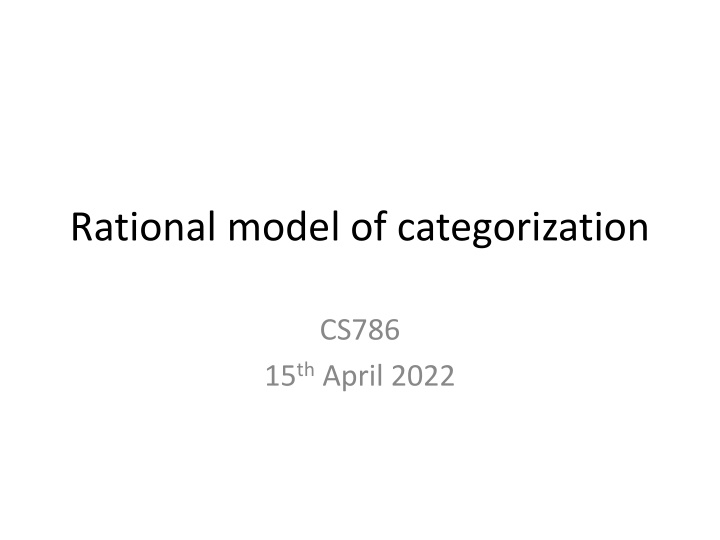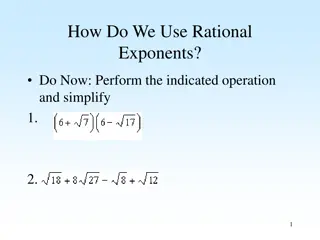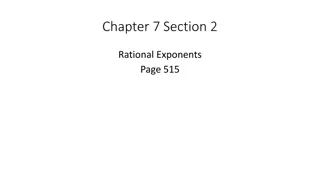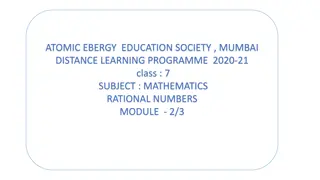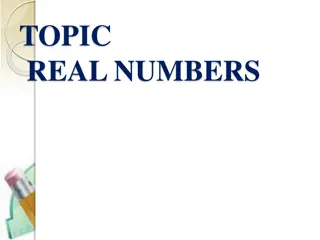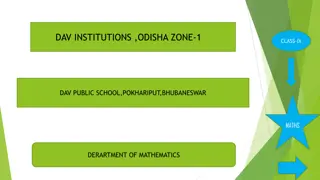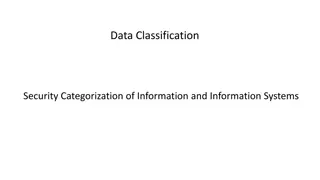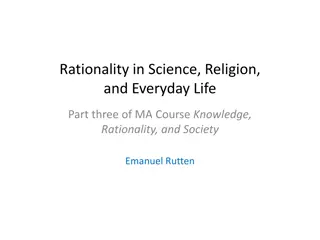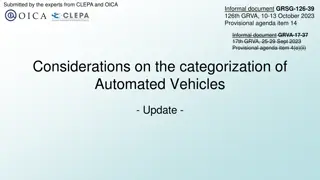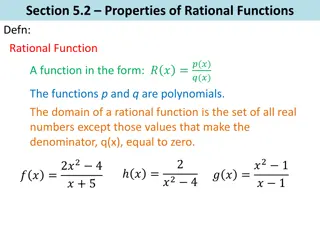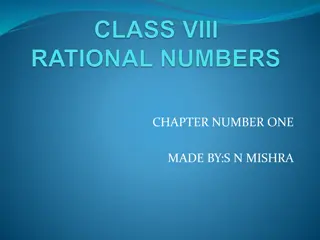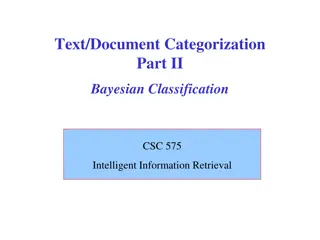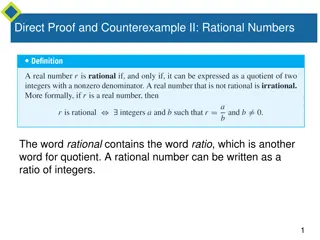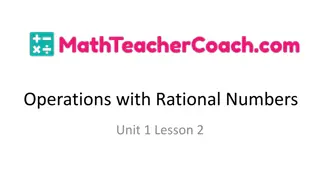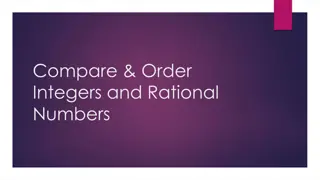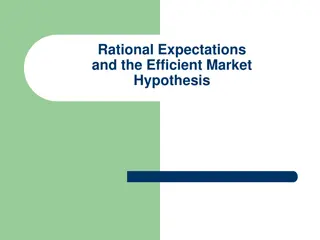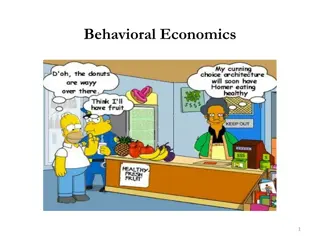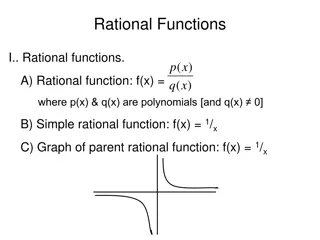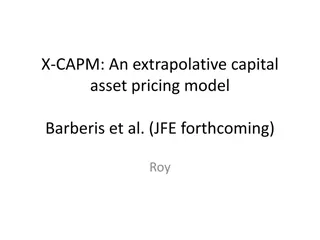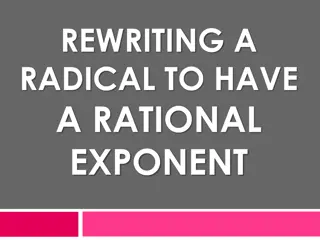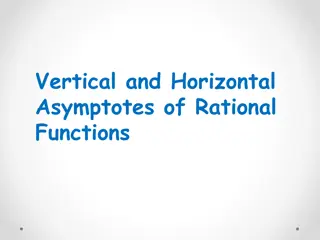Rational Model of Categorization: Insights and Applications
A comprehensive overview of the rational model of categorization, discussing how people behave when storing prototypes or exemplars. Explore the Bayesian observer model, connections with classic models, and the clustering view of categorization. Delve into the crucial insights between prototype and exemplar models, emphasizing the varying abstraction model and Dirichlet Process in category learning.
Download Presentation

Please find below an Image/Link to download the presentation.
The content on the website is provided AS IS for your information and personal use only. It may not be sold, licensed, or shared on other websites without obtaining consent from the author.If you encounter any issues during the download, it is possible that the publisher has removed the file from their server.
You are allowed to download the files provided on this website for personal or commercial use, subject to the condition that they are used lawfully. All files are the property of their respective owners.
The content on the website is provided AS IS for your information and personal use only. It may not be sold, licensed, or shared on other websites without obtaining consent from the author.
E N D
Presentation Transcript
Rational model of categorization CS786 15thApril 2022
Setup People behave as if they are storing prototypes sometimes Category judgments evolve over multiple presentations Sensible thing to do in situations where the category is not competing with others for membership People behave as if they are storing exemplars sometimes Probability matching behavior in describing category membership Sensible thing to do when discriminability at category boundaries becomes important Shouldn t we have models that can do both?
A Bayesian observer model of categorization Want to predict category label c of the Nth object, given All objects seen before and Their category labels Sequential Bayesian update Assumption: only category labels influence the prior. Can you think of situations when this would be broken?
Connection with classic models Remember the GCM category response calculation? Likelihood Prior Look at the numerator of the Bayesian model Prior Likelihood Let s call this likelihood LN,j
A unifying view In an exemplar model In a prototype model Crucial insight Prototype model is a clustering model with one cluster Exemplar model is a clustering model with N clusters https://hekyll.services.adelaide.edu.au/dspace/bitstream/2440/46850/1/hdl_46850.pdf
The clustering view of categorization Stimuli are grouped in clusters Clusters are associated with categories Either non-exclusively (Anderson s RMC, 1992) Or exclusively (Griffiths HDP, 2006) Now the likelihood can look like First proposed as the varying abstraction model (Vanpaemal et al., 2005)
How many clusters need we learn per category? Deeply related to the non-parametric Bayesian question of how many clusters we need to fit a dataset Problem addressed by Anderson s Rational Model of Categorization (RMC) Modeled category learning as a Dirichlet Process
RMC: big picture Treat categories as just another label for the data Category learning is equivalent to learning the joint distribution Learn this as a mixture model p(zN) is a distribution over all possible clusterings of the N items http://blog.datumbox.com/the-dirichlet-process-the-chinese-restaurant-process-and-other- representations/
Coin toss example Say you toss a coin N times You want to figure out its bias Bayesian approach Find the generative model Each toss ~ Bern( ) ~ Beta( , ) Draw the generative model in plate notation
Plate notation Random variables as circles Parameters, fixed values as squares Repetitions of conditional probability structures as rectangular plates Switch conditioning as squiggles Random variables observed in practice are shaded
Conjugacy Algebraic convenience in Bayesian updating Posterior Prior x Likelihood We want the distributions to be parametric, the parameter is what is learned we want the posterior to have the same parametric form as the prior Conjugate prior = f(.) such that f( )g(x| ) ~ f( new)
Useful conjugate priors This one is important for us
The multinomial distribution For n independent trials that could yield one of k possible results, the multinomial distribution gives the probability of seeing any particular combination of outcomes Each point can go into one of k clusters z_i is the number of points in each cluster for the immediate observation p_i is the fraction of points in each cluster in the long run Given 3 clusters A,B and C, with normalized empirical frequencies [0.3, 0.4, 0.3] seen over a large set, what is the probability of the partitioning AABB for a four data sample? P(clustering) = 6 x 0.09 x 0.16 = 0.0864
The Dirichlet distribution A k-dimensional Dirichlet random variable can take values in the (k-1)-simplex, and has the following probability density on this simplex: ( ) ( = i k i k ) = = 1 1 1 ( i p k 1 1 k ) 1 i Easier to understand Prior Dir( 1, 2) Likelihood Multi( 1 , 2) Outcome {n1, n2} Posterior Dir( 1+ n1, 2 + n2) Ignoring the normalization constant, what is the Dirichlet probability of a multinomial sample [0.1, 0.5, 0.4] with parameter 10 (0.1)9 (0.5)9 (0.4)9 = 5e-16 What would it be for parameter 0.2? 22
Dirichlet distribution emits multinomial samples
Dirichlet process Probability distribution over probability measures A probability measure is a function that maps a probabilistic sample space to values in [0,1] G is a DP( , G0) distributed random probability measure if for any partition of the corresponding probability space we have https://en.wikipedia.org/wiki/Probability_space
Dirichlet process mixture model G0 eventually stores the mean counts of cluster assignments G0 0 serves as an inverse variance parameter; high values mean more clusters for the same data 0 G zi xi G is a Dirichlet distribution on possible partitions of the data z is a sample from this distribution, a partition of the data Learning the right parameter values ends up telling us which partitions are most likely
RMC prior is a Dirichlet process prior The prior reflects a generative process where M is the count of cluster assignments to that point. Compare with the GCM frequency prior.
What does RMC do? It s a Dirichlet process mixture model that learns clusters in the data Each cluster is soft-assigned to any of the category labels through feedback How many clusters are learned across the entire dataset depends on the CRP prior Weaknesses Same number of clusters across all categories Order in which data points enter the model doesn t matter (exchangeability)
The value of RMC Partially explains how humans might succeed in learning category labels for datasets that are not linearly separable in feature space 1s dominance Category A 0s dominance
HDP model of categorization G0 0 G zi xi
HDP model of categorization G0 0 Gj zij xij C
HDP model of categorization G0 H 0 Gj zij xij C C is the number of category labels HDP learns clusters for each category label separately. Can have varying numbers of clusters for each category now.
A unifying view of categorization models The HDP framework successfully integrates most past accounts of feature-based categorization
Predicting human categorization dynamics Human data HDP+, Insight: category-specific clustering seems to explain the data best
Open questions How to break order-independence assumptions in such models Human categorization is order dependent The actual calculations in these models are formidable What simplifications are humans using that let them do the same task using neuronal outputs? The likelihood function is just similarity based Are similarity functions atomic entities in the brain, or are they subject to inferential binding like everything else
